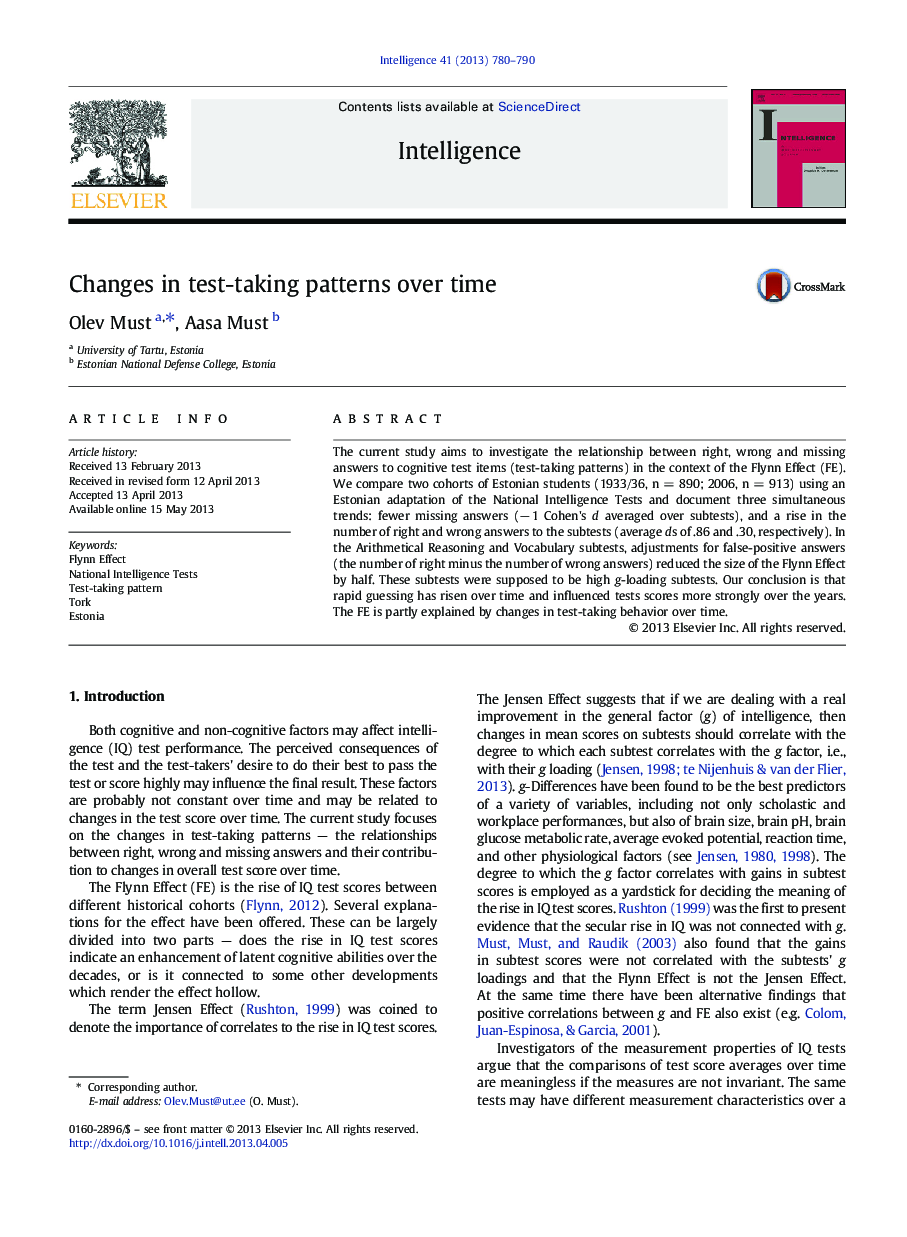| Article ID | Journal | Published Year | Pages | File Type |
|---|---|---|---|---|
| 929158 | Intelligence | 2013 | 11 Pages |
•Between the years 1934/36 to 2006, the test-taking patterns of students have changed.•The Flynn Effect is partly explained by changes in test-taking behavior.•Adjusting for false-positive answers reduces the rise in test scores.•Changes in test-taking have an impact on the estimation of the Flynn Effect.
The current study aims to investigate the relationship between right, wrong and missing answers to cognitive test items (test-taking patterns) in the context of the Flynn Effect (FE). We compare two cohorts of Estonian students (1933/36, n = 890; 2006, n = 913) using an Estonian adaptation of the National Intelligence Tests and document three simultaneous trends: fewer missing answers (− 1 Cohen's d averaged over subtests), and a rise in the number of right and wrong answers to the subtests (average ds of .86 and .30, respectively). In the Arithmetical Reasoning and Vocabulary subtests, adjustments for false-positive answers (the number of right minus the number of wrong answers) reduced the size of the Flynn Effect by half. These subtests were supposed to be high g-loading subtests. Our conclusion is that rapid guessing has risen over time and influenced tests scores more strongly over the years. The FE is partly explained by changes in test-taking behavior over time.
